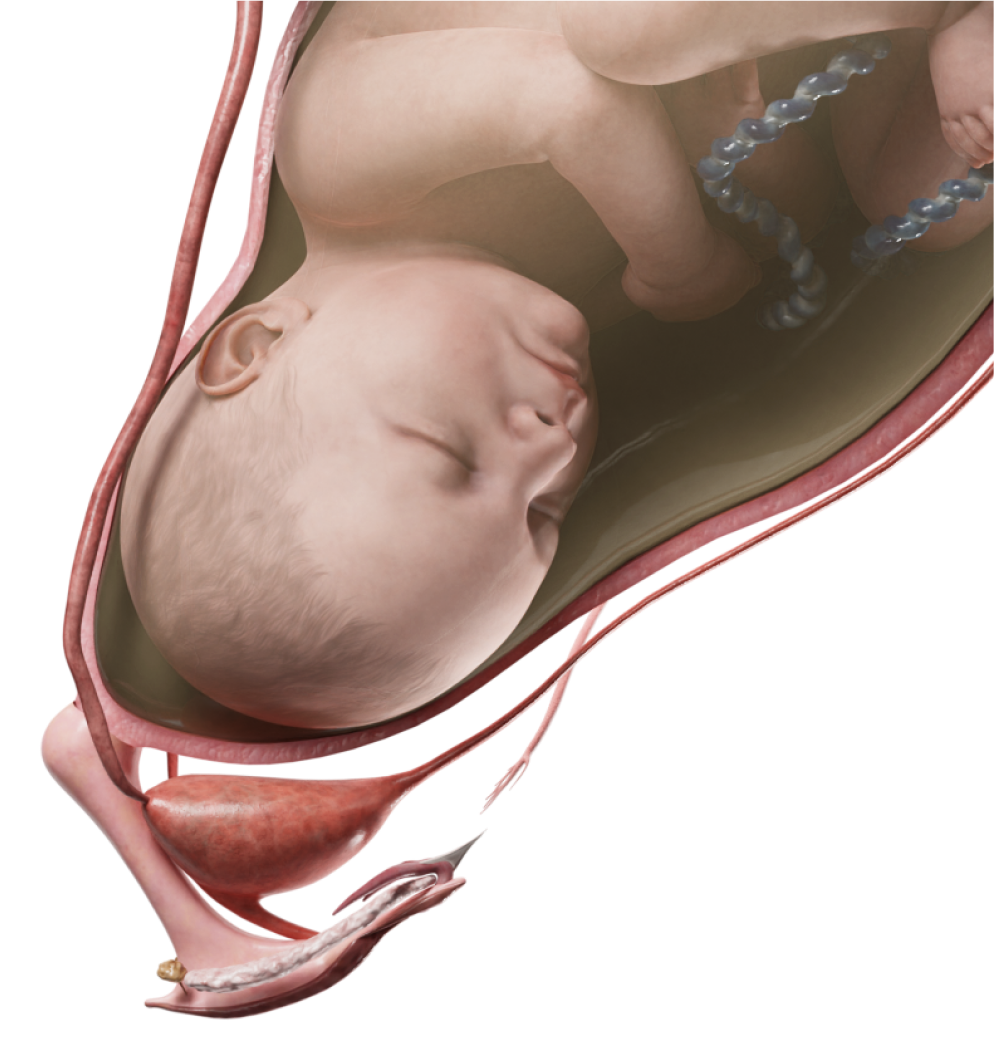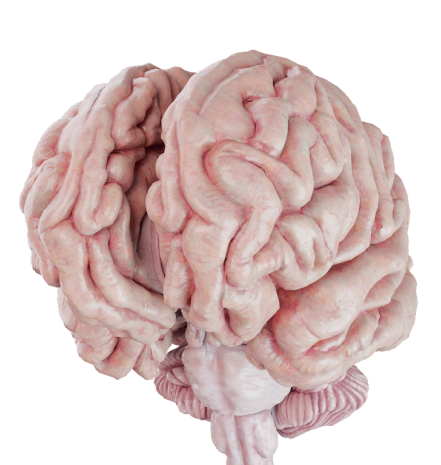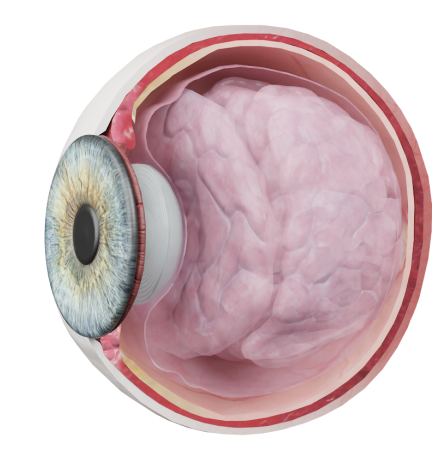Nose injuries
Overview
As the most prominent part of the body, the nose is generally more prone to injury compared to other body regions. A fracture of the nasal bones indicates that the structural integrity of the bony-cartilaginous framework of the nose has been compromised due to a mechanical impact.
Nasal abrasions represent superficial damage to the skin when the papillary and reticular layers of the dermis are affected.
Nasal wounds affect all layers of the dermis and may spread as deep as the soft tissues and muscles.
A nasal avulsion is the traumatic amputation of the distal part of the nose.
A crush injury of the soft tissues of the nose, when the skin remains intact, is called a nasal contusion. It typically occurs as a result of blunt force trauma.
Hemosinus (also hematosinus) is characterized by blood accumulation in the paranasal sinuses.
Thermal nasal injuries may develop when extremely high or low temperatures damage the skin and underlying tissues of the nose.
Classification
Fracture of nasal bones:
- Closed fracture of nasal bones with displacement of bone fragments;
- Closed fracture of nasal bones without displacement of bone fragments;
- Open fracture of nasal bones with displacement of bone fragments;
- Open fracture of nasal bones without displacement of bone fragments;
- Nasal septal damage.
Fracture of nasal bones (Johnson, 2013):
- Type 1 (simple fractures without displacement);
- Type 2 (simple fractures with deviation);
- Type 3 (fragmentation of nasal bones);
- Type 4 (fractures with significant displacement and deformity);
- Type 5 (combined fractures).
Nose injuries involving compromised skin integrity:
- Nasal abrasions;
- Nasal lacerations;
- Avulsion of apex of nose;
- Nasal avulsion.
Other injuries:
- Hemosinus (hematosinus);
- Nasal contusion.
Thermal nasal injuries (burns):
- First-degree burn;
- Second-degree burn;
- Third-degree burn (A);
- Third-degree burn (B);
- Fourth-degree burn.
Thermal nasal injuries (frostbites):
- First-degree frostbite;
- Second-degree frostbite;
- Third-degree frostbite;
- Fourth-degree frostbite.
Fracture of Nasal Bones (incl. Johnson, 2013)
Etiology
Among all types of injuries, especially those in the facial region, this condition is the most prevalent. Nasal bones may become fractured as a result of domestic accidents, outdoor falls, sports injuries, and road traffic accidents.
Anatomic Pathology
To this day, a unified classification of nasal bone fractures has not been approved. Here, we have tried to put together and categorize the most wide-spread cases from clinical practice. This type of injury typically affects the nasal bones, frontal processes of the maxilla, and nasal septum.
The extent and nature of the damage depend on the force and direction of the exact damaging factor.
- Low force typically results in a fracture line or crack. In this case, bone fragments are not displaced.
- A blow directed to the nasal dorsum from the front does not displace bone fragments either. In such instances, the nasal septal cartilage (or quadrangular cartilage) bears the most damage, such as a horizontal fracture or dislocation.
- However, high force can cause the cartilaginous part of the alae of the nose to sink behind the frontal processes of the maxilla, which is known as a saddle deformity. In this case, the nasal septum in the region of the perpendicular plate of the ethmoid bone is fractured.
- When force is applied from the side, the bone structures are displaced in the opposite direction, more often to the right. Both nasal bones are broken, and sometimes the frontal processes of the maxilla (on the side opposite to the blow) and perpendicular plate may be damaged.
- Side blows close to the apex of the nose dislocate the nasal septal cartilage and may cause marginal fractures of the nasal bone without displacement.
Currently, open and closed fractures are not clearly defined. Some authors propose that open fractures compromise skin integrity. This theory has a drawback: the bony part does not communicate with a cutaneous wound via the wound canal. Yet, some scientists believe that open fractures only mean that the bone is exposed to the environment.
Moreover, the nasal mucosa may either remain intact or become damaged. In the latter case, ruptures along with moderate bleeding are observed; subcutaneous emphysema may also develop.
The Johnson classification of nasal bone fractures is widely accepted in European countries.
When using this classification, a healthcare professional should consider the following specifics:
Type 1 fractures are characterized by impaired integrity of any bone in the nasal bony pyramid without displacement that does not deform the external nose.
Type 2 covers unilateral or bilateral fractures of the bones in the nasal bony pyramid with displacement and nose deformity.
In type 3 fractures, the nasal bones are fragmented bilaterally, whereas the nasal septum may remain intact or become damaged to varying extents.
Type 4 fractures cause massive damage; besides the nasal bones and frontal process of the maxilla, the nasal septum is affected. All this leads to a deformed external nose.
Type 5 fractures result in combined damage and compromise the integrity of the soft tissues. In such instances, the bony pyramid of the nose becomes depressed, leaving a saddle deformity; the cranial base and orbit are fractured.
Clinical Manifestations
Patients complain of pain in the region of their nose and face, especially pronounced at the moment of the injury. Moreover, nasal breathing problems, bleeding, and a reduced sense of smell are typically observed. Marked edema affects the soft tissues of the nose and surrounding areas; sometimes, hematomas (including periorbital ones) may develop. When bone fragments are displaced, patients are not satisfied with the appearance of their external nose. Open fractures generate a wound along with bleeding.
Diagnosis
A healthcare professional should collect a detailed medical history and identify the circumstances of the trauma. Upon rhinoscopy, blood clots in the nasal cavity are identified; in rare cases, ongoing bleeding and marked mucosal edema may also be found. Additionally, the mucosa may tear, the nasal septal cartilage may be dislocated, and the nasal septum may be deviated.
When a nasal septal hematoma develops, a purple, cushion-like bulging of the mucosa is observed. Open fractures are associated with a cutaneous wound and external bleeding.
Upon palpation, the nose is very painful, abnormally mobile, and produces grating sounds (also known as crepitus).
Whenever possible, a doctor evaluates the external nose shape and identifies hematomas and subcutaneous emphysemas (if any). However, frequently, a marked edema of the soft tissues does not allow for a definite diagnosis of a nasal deformity.
If a nasal bone fracture is suspected, patients are referred for a lateral nasal X-ray. If an X-ray is inconclusive, a CT of the facial bones is indicated to determine the localization and nature of the damage more accurately.
Treatment
Closed fractures without displacement require only medical treatment aimed at preserving the breathing function. Local decongestants, regular nose cleaning with a saline solution, and systemic painkillers are generally indicated. Patients are advised to limit their physical activity and avoid any impact on the external nose.
Primary surgical wound management is performed in case of a cutaneous wound (caused by an open fracture). Patients should be immunized to prevent tetanus.
Nasal fractures with displacement must be treated surgically. The method aims to position and fix bone fragments, restore the breathing function, and eliminate an acquired external nose deformity. Surgery may be early (within the first 7–10 days after the trauma), delayed (10–14 days), or elective. The nasal bones may be repositioned either externally (manual reduction) or endonasally (using bone elevators). Then, the nose is tightly packed with gauze strips or fixed with a splint externally if needed.
Elective surgery should be performed 6 months after the trauma or later. The techniques to restore the external nose shape and breathing function include septo- and rhinoseptoplasty.
Nose Injuries Involving Compromised Skin Integrity
Etiology
These conditions are caused by a forceful mechanical impact applied to the nasal region (falls, bites, sports events, road traffic accidents, occupational injuries, etc.). During military operations, incised wounds and mine-blast traumas are often associated with nasal avulsions.
Anatomic Pathology
Skin abrasions are characterized by partial damage to the epidermis that does not involve deeper skin layers. Such lesions tend to bleed immediately after the trauma, eventually being covered by a hemorrhagic crust. A laceration leads to more significant damage that affects the underlying tissues (muscles or cartilages). The edges are separated leaving an open or gaping wound, and it bleeds profoundly. The alae and the apex of the nose are more prone to such trauma.
An avulsion of the apex of the nose means that its distal part, including the skin, muscles, and cartilages, is amputated and the nasal cavity becomes exposed.
A nasal avulsion is a traumatic amputation of the bony-cartilaginous framework of the external nose. In such cases, the piriform aperture and nasopharynx are exposed. Both types of injuries cause massive bleeding.
Clinical Manifestations
Abrasions are painful at the moment the trauma is inflicted and cause minor bleeding. Then, a hemorrhagic crust forms to protect the skin during healing.
Lacerations and avulsions are painful both at the moment and afterward until the wound is closed. Both types of lesions are associated with profuse bleeding and may impair breathing due to reactive edema of the nasal cavity.
Diagnosis
Diagnosis is based on a detailed history of the trauma and an ENT exam. A lateral nasal X-ray is indicated to rule out any possible nasal bone fractures.
Treatment
Primary surgical wound management is essential. The wound edges may be carefully excised to minimize tissue loss. Cosmetic skin sutures are preferred for esthetic purposes. Replantation is an option if a vital amputated nose part is preserved. If replantation is not feasible, reconstructive surgery using a vascularized transplant is performed at a later stage. Patients should be immunized to prevent tetanus; animal bites necessitate rabies prophylaxis.
Nasal Contusion Hemosinus (Hematosinus)
Etiology
A nasal contusion develops after blunt force trauma to the nasal region or forward falls. Hemosinus occurs in cases of nasal bone fractures that involve walls of the paranasal sinuses (often the maxillary ones) and severe head injuries. It may sometimes be observed in patients with massive bleeding that requires nasal packing and after surgery in the paranasal sinuses or nasal cavity.
Anatomic Pathology
Contusions give rise to marked edema of the soft tissues, both external and within the nasal cavity. As a result, hematomas of the soft tissues may develop; the nasal septum is rarely affected. The skin and bony structures remain intact. Forceful blows may cause the mucosa of the nasal cavity to tear, leading to nosebleeds.
Hemosinus (or hematosinus) means that blood accumulates in the paranasal sinuses. This happens because of fractures of the nasal bones, maxilla, or zygomatic bones. If treated properly, the accumulated blood lyses and drains into the nasal cavity as part of mucoid discharge via a natural passage. Hemosinus may evolve into pyosinus, which is considered an unfavorable outcome. In this case, accumulated blood is replaced by pus.
Clinical Manifestations
Nasal contusions are painful at the moment the trauma is inflicted. After that, the nose is slightly tender, especially upon palpation. Bleeding may commence right after the trauma. A few hours after the trauma, marked edema of the soft tissues and hematoma of the paranasal area (including periorbital) develop. Patients may experience difficulty breathing caused by edema of the nasal mucosa. Hemosinus is usually asymptomatic, and the clinical signs are mainly driven by the underlying condition (a fracture).
Diagnosis
Diagnosis is based on medical history and an ENT exam. Patients are referred for an X-ray of the paranasal sinuses and nasal bones in a lateral projection. In case of any doubts, a CT scan of the facial bones is recommended.
Treatment
Within the first hours after a nasal contusion, cold compresses should be applied to the affected area. Medical therapy encompasses systemic NSAIDs and intranasal decongestants along with irrigation of the nasal cavity.
If a nosebleed persists, it should be stopped. To this end, anterior nasal packing may be required.
Hemosinus necessitates systemic antibacterial therapy, intranasal decongestants, and nasal irrigation with normal saline or antiseptic solutions.
If there is no improvement within a few days, the accumulated blood should be evacuated through a puncture of the maxillary sinus or a sinusotomy (an incision in the sinus). The primary condition (a fracture) should be addressed at all times.
Thermal Nasal Injuries (Burns)
Etiology
Burns develop when the nasal region is affected by hot liquids, steam, or ultraviolet (UV) radiation, such as sunburns. The higher the temperature and exposure time of the liquid (steam) is, the more damage a patient can incur.
Anatomic Pathology
Burns are categorized according to the lesion depth.
⦁ First-degree burns (superficial): Only the outer skin layer (epidermis) is affected.
⦁ Second-degree burns (superficial partial-thickness): Damage extends to both the epidermis and superficial dermis layers.
⦁ Third-degree burns (deep partial-thickness, 3A): The epidermis and all dermis layers are involved; however, the hair follicles and sweat glands remain intact.
⦁ Third-degree burns (superficial full-thickness, 3B): The epidermis, dermis, subcutaneous fat, and skin appendages (hair follicles and sweat glands) are involved.
⦁ Fourth-degree burns (deep full-thickness): The lesions extend beyond the skin, causing necrosis of muscles, tendons, and cartilage, thus exposing the bone.
The first two types of burns heal when the wound surface heals through epithelialization, whereas third- and fourth-degree lesions require scar tissue formation.
Clinical Manifestations
Any type of burn triggers severe pain in the affected area.
First-degree burns: The skin typically appears hyperemic. The burn site is painful upon palpation and blanches when touched.
Second-degree burns: Hyperemic skin develops serous blisters filled with clear fluid; the wound bed is pink. Such blisters are also painful upon palpation and may form at any point within 24 hours after the injury.
Third-degree burns (A): The lesions are characterized by serous blisters on hyperemic infiltrated skin, which can also be filled with hemorrhagic fluid. The wounds are moderately painful.
Third-degree burns (B): Coagulation necrosis and sometimes serous or hemorrhagic blisters are observed. The lesion is painless; and hairs can easily be pulled from their roots without pain.
Fourth-degree burns: Deep full-thickness burns lead to black crusts. An exposed bone becomes the wound bed, which is otherwise painless. Note that nasal burns are rarely observed alone — other body parts are typically damaged as well.
Diagnosis
Diagnosis is based on a detailed history of the trauma and an ENT exam. During a prehospital check-up, the patient’s airway patency must be assessed. Then, the nasopharyngeal mucosa is monitored regularly to promptly identify any signs of burns and reactive mucosa edema, and to prevent respiratory failure. To devise a treatment plan, a healthcare professional should evaluate the depth of the lesion and the percentage of the total body surface area (TBSA) affected. In cases of extensive burns, blood tests, urinalysis, and an ECG are performed to anticipate any systemic complications.
Treatment
First and foremost, any contact with the damaging factor should be terminated. If a patient has inhaled smoke, humidified oxygen is administered at a prehospital stage.
Whenever possible, the damaged body area should be cooled down and an adequate level of analgesia should be provided. Superficial burns are generally treated locally with dressings and antibacterial ointments. Blisters are managed differently depending on their size: small lesions should remain as they are, while larger blisters require excision. Deep burns necessitate skin graft transplantation.
Patients with large and deep burns must be admitted to a specialized burn unit.
Thermal Nasal Injuries (Frostbites)
Etiology
Frostbites typically develop on exposed skin areas subjected to low temperatures for extended periods. However, frostbites may occur even at temperatures above zero if the weather conditions are unfavorable (high humidity and strong wind).
Anatomic Pathology
Cold causes body cells to freeze and subsequently die. Moreover, cold exposure triggers vasoconstriction of peripheral blood vessels to provide more blood flow to the vital organs. The tissues become ischemic, leading to cell death. In some cases, it may be challenging to assess the degree of a frostbite immediately, as typical alterations may develop only a few days later. For instance, blisters are observed within the first 4–8 hours, and necrosis borders become demarcated several days after the event.
First-degree frostbites affect the superficial layers of the dermis, making the skin look pale.
In second-degree frostbites, serous blisters erupt on the pale skin.
Deep skin lesions are observed in third-degree burns. These are represented by blisters filled with hemorrhagic fluid.
Fourth-degree frostbites are characterized by full-thickness necrosis of the skin and underling tissues. This stage presents with dry gangrene, black dry crusts over the distal areas, and in extreme cases, autoamputation. The affected skin becomes cyanotic and mottled. Such damage is also accompanied by second- and third-degree manifestations and leads to blisters filled with different types of fluids.
Clinical Manifestations
Initially, frostbites cause burning sensations and numbness in the affected area. The frostbitten skin is pale, cold to the touch, hard, and mottled. Upon warming, patients start to feel severe pain. Pain intensity correlates with the lesion degree. The skin becomes highly hyperemic and edematous. As described earlier, depending on the degree, frostbites present with specific local skin alterations.
Diagnosis
Diagnosis is based on medical history and assessment of both general condition and local changes.
Treatment
The damaged body area should be warmed up. Under no circumstances should the skin be massaged. Direct exposure to open flame should also be avoided, as frostbites reduce skin sensitivity to stimuli, which can lead to burns. The affected body part may be immersed in warm water or covered with a dry, warm dressing. An adequate level of analgesia should be provided; sometimes opioids may be indicated. In cases of general hypothermia, warm fluids and thermal blankets may be used. Locally, blisters may be treated with antibacterial ointments and sterile dressings. To improve tissue perfusion, anticoagulants, antiplatelet agents, and vasodilators are indicated. Dry gangrene may necessitate surgical amputation within a few days after the trauma.










